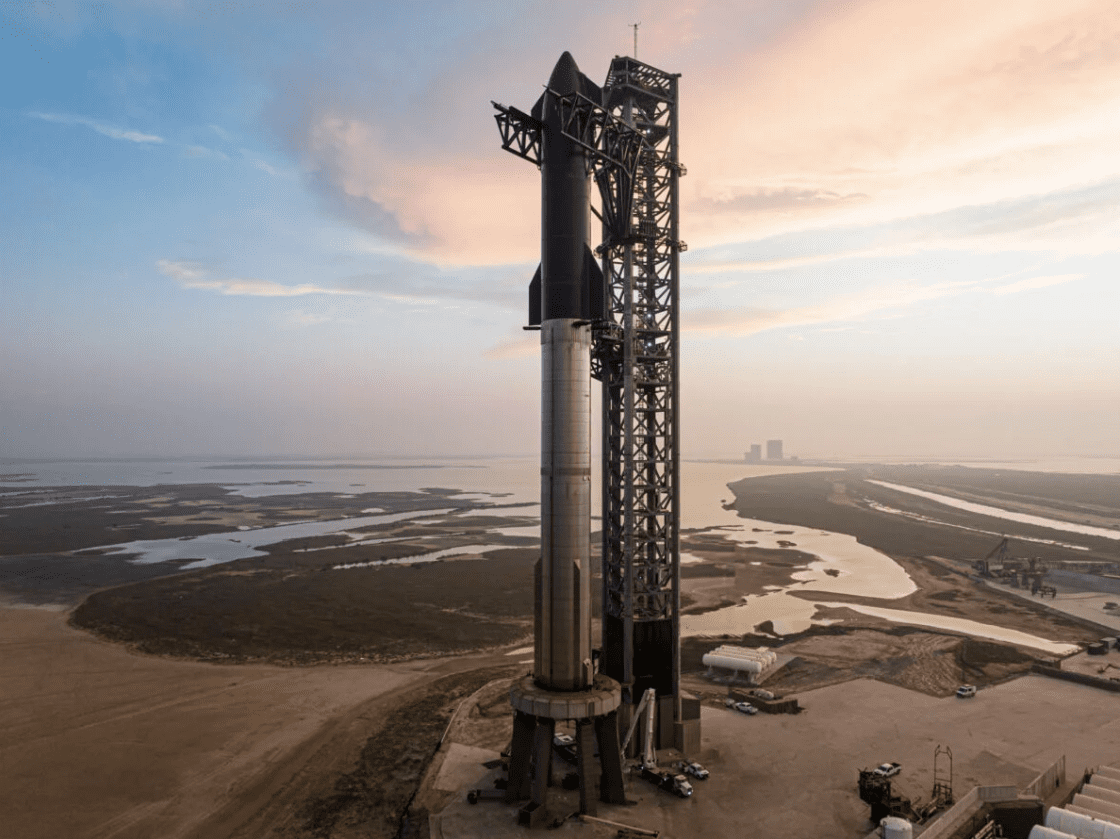At Lonsdale Avenue Magazine, we love celebrating local news and supporting North Vancouver’s tourism and hospitality industries. But sometimes, a story with global implications makes such waves that we just have to share it. Today, we’re excited to talk about one of the most jaw-dropping moments in space history: SpaceX’s successful launch and capture of Starship, the world’s heaviest rocket, led by Elon Musk’s visionary team.
On October 13, 2024, SpaceX’s monumental Starship rocket took to the skies from its Starbase site in South Texas. But the feat didn’t stop with the launch. In a historic first, the 400-foot-tall rocket’s Super Heavy booster stage was not only launched successfully but also captured mid-air with the towering Mechazilla arms of the launch tower. This groundbreaking maneuver marked a major milestone for space exploration and engineering, as no rocket of this size and power had ever been launched and recovered in such a way.
Minutes after liftoff, the Super Heavy booster separated from the upper Starship stage, reversed its path, and flew back toward the launch site. While the Starship upper stage continued its flight into space and splashed down in the Indian Ocean, the booster was carefully caught by the giant mechanical arms of the launch tower, known as Mechazilla. This dramatic moment signaled a new era for reusable rocket technology. SpaceX spokesperson Dan Huot, clearly awestruck, summed it up perfectly: “Are you kidding me? Even in this day and age, what we just saw—that looked like magic.”
The importance of reusability in space travel cannot be overstated. Traditionally, rockets are either discarded in the ocean or burned up upon re-entry, making each mission enormously expensive. SpaceX is rewriting that rulebook by designing rockets that can be launched, recovered, and reused, dramatically cutting costs and turnaround times for future flights. The successful capture of Starship’s Super Heavy booster is a major leap toward achieving that vision.
Technical Details of the Starship Rocket
For those of you who appreciate the technical brilliance behind this achievement, here’s what makes Starship such a game-changer in the world of aerospace engineering:
Height and Structure
Starship is a two-stage rocket system standing at an astonishing 400 feet (122 meters), making it the tallest rocket ever built. It consists of the Super Heavy booster and the Starship upper stage, both designed to be fully reusable.
Super Heavy Booster
The Super Heavy booster, the powerhouse behind Starship, is 230 feet tall and is equipped with 33 Raptor engines, fueled by liquid methane and liquid oxygen (LOX). These engines generate a whopping 16.7 million pounds of thrust, more than twice the thrust of NASA’s Saturn V rocket. The booster’s ability to return to the launch pad and be caught by Mechazilla is central to SpaceX’s goal of rapid rocket reusability.
Starship Upper Stage
The second stage, Starship, is 165 feet tall and has six Raptor engines—three optimized for operation in Earth’s atmosphere and three designed for use in the vacuum of space. The upper stage is designed to carry up to 100 metric tons of cargo or passengers. Its advanced heat shield protects it during re-entry, surviving temperatures of up to 3,000°F (1,650°C).
Mechazilla Launch Tower
The towering Mechazilla launch tower, equipped with its massive metal “chopstick” arms, plays a pivotal role in SpaceX’s strategy for quick rocket turnaround. Not only does it stack the rocket components before launch, but it also captures the returning booster stage, eliminating the need for traditional landing legs. This allows for rapid reusability, a key to lowering spaceflight costs and increasing mission frequency.
Fuel and Propulsion
Both stages of Starship are powered by a methalox fuel system, using liquid methane and liquid oxygen. This combination is chosen for its efficiency and potential for in-situ fuel production on Mars, a critical component for future interplanetary missions. With its 33 Raptor engines, the Super Heavy booster produces a total thrust of 16 million pounds at liftoff, making Starship the most powerful rocket in history.
Re-entry and Reusability
Starship’s reusability is made possible by its innovative re-entry system. The spacecraft performs a unique “belly-flop” maneuver, where it flips horizontally to slow down, using its heat shield and steering fins to guide the descent before flipping upright again for a controlled landing. This design, combined with the booster’s mid-air capture, positions SpaceX at the forefront of rapid, reusable space technology.
A New Era for Space Exploration
This test flight didn’t just push the boundaries of engineering—it redefined what’s possible for the future of space exploration. With Starship’s successful launch and capture, SpaceX is one step closer to making rapid, reusable rockets a reality. The implications for space travel are enormous. Reusability slashes the cost of each mission, enabling more frequent flights to the Moon, Mars, and beyond.
NASA has already contracted SpaceX to use Starship for its Artemis program, which aims to land astronauts on the Moon by 2026. But Musk and his team have even bigger dreams—using Starship as the vehicle that will take humans to Mars and perhaps, one day, establish human colonies on other planets. With the Starship system showing such promise, those dreams feel closer than ever.
At Lonsdale Avenue Magazine, we’re not just excited about what this means for space travel—we’re inspired by the endless possibilities of where innovation can take us. We look forward to the day when future tourists from North Vancouver might be booking flights to the Moon or even Mars! Until then, we’ll continue sharing the stories that inspire our community, whether they’re happening right here in North Van or halfway across the world.
This historic moment in space history marks the dawn of a new era for humanity, and we can’t wait to see what’s next.


